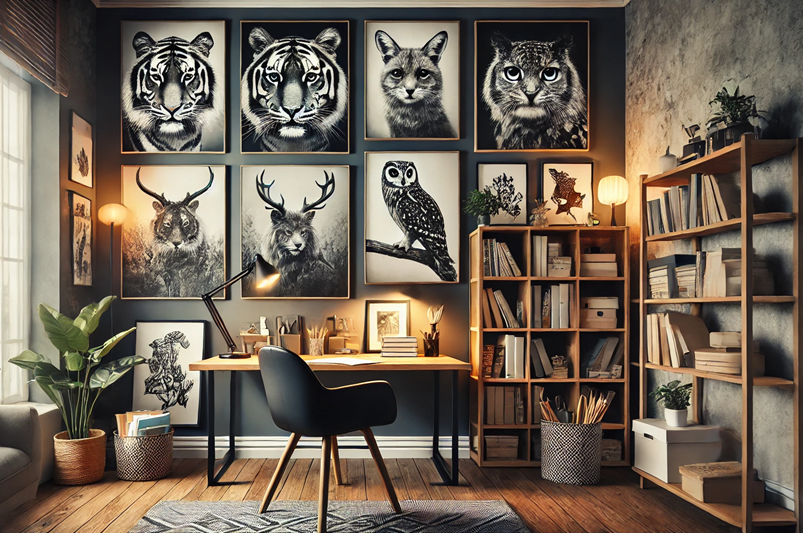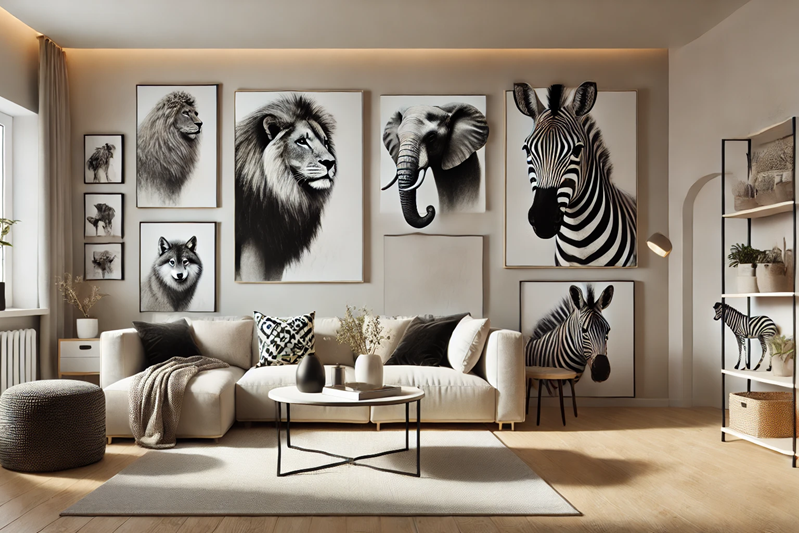Black and white animal portraits highlight their unique features and showcase their personality in a timeless way. This style focuses on contrast, texture, and emotion, allowing every detail to shine. Black and white portraits have a timeless appeal, offering a glimpse into the soul of the subject without the distraction of color. Whether you’re a budding photographer or a seasoned professional, creating stunning black and white animal portraits requires a combination of skill, technique, and creativity. Here’s a step-by-step guide to help you craft captivating portraits that stand out.
Understanding the Beauty of Black and White Portraits
Black and white photography emphasizes textures, shadows, and details. It simplifies the image, removing distractions and focusing on the subject’s essence. When photographing animals, it highlights their fur, feathers, or scales in intricate detail. Choosing this medium allows you to evoke a sense of timelessness and purity, making the subject’s personality the focal point.
Choosing the Right Equipment
Selecting the right tools is key to achieving quality results.
- Camera: A DSLR or mirrorless camera with manual settings offers better control over lighting and exposure.
- Lens: A prime lens or telephoto lens works well for capturing sharp details.
- Tripod: Ensures stability, especially for close-ups.
Equipment doesn’t need to be expensive, but it should align with the type of shots you plan to take. High-resolution cameras help retain the finer details essential for black and white portraits.
Understanding Lighting
Lighting sets the tone for your portrait. Natural light works wonders, especially in outdoor settings.
- Soft Light: Early mornings or overcast days create gentle shadows.
- Strong Light: Direct sunlight adds bold contrast, enhancing textures.
Experiment with backlighting or side lighting to create depth. Indoors, use diffused light sources to avoid harsh shadows. The goal is to enhance textures and contrasts, which are vital for black and white images.

Mastering Composition
Composition guides the viewer’s eye to the subject. Use these techniques for compelling animal portraits:
- Rule of Thirds: Place the subject off-center for a balanced look.
- Framing: Use natural elements like tree branches or fences to frame the subject.
- Negative Space: Allow empty space to highlight the animal’s form.
Ensure the background complements the subject without overpowering it. A simple background works best to keep the focus on the animal.
Focusing on Details
Details make a black and white portrait truly special. Pay attention to:
- Eyes: Capture the animal’s eyes sharply as they convey emotion.
- Texture: Highlight fur, feathers, or scales using good lighting.
- Expression: Wait for moments that reflect the animal’s personality, such as a curious tilt of the head or a playful gesture.
These elements add depth and emotion, making the portrait stand out.
Post-Processing for Black and White Portraits
Editing plays a crucial role in black and white photography. Use tools like Lightroom or Photoshop for adjustments:
- Contrast: Boost contrast to emphasize textures and details.
- Shadows and Highlights: Adjust these to create depth.
- Clarity: Enhance clarity to sharpen fine details.
Convert the image to black and white manually instead of using filters. This approach provides more control over tonal adjustments.
Tips for Photographing Different Animals
Every species brings unique challenges and opportunities:
- Pets: Use familiar settings to keep them relaxed.
- Wildlife: Patience is essential; use a telephoto lens for distance.
- Farm Animals: Natural light and open spaces work well for large subjects.
Understand the behavior of your subject to anticipate moments worth capturing.
Common Mistakes to Avoid
Avoid these pitfalls to ensure stunning portraits:
- Overexposure: It can wash out textures and details.
- Cluttered Backgrounds: Distract from the subject.
- Ignoring Lighting: Poor lighting diminishes the impact of the image.
Practice and attention to detail will help you refine your craft over time.

FAQ: Creating Black and White Animal Portraits
Q: Can I use a smartphone for black and white animal portraits?
A: Yes, many smartphones have advanced cameras with manual settings and apps for post-processing.
Q: How do I keep animals still during the shoot?
A: Patience is key. Use treats, toys, or soothing sounds to keep them engaged.
Q: Should I shoot in color or black and white?
A: Shoot in color and convert to black and white during editing for more control over tones.
Q: What is the ideal aperture for animal portraits?
A: Use a wide aperture (f/2.8–f/5.6) for shallow depth of field, keeping the subject sharp and the background blurred.
Q: How do I choose the right location?
A: Pick a location that complements the animal’s natural habitat for an authentic feel.
Transform Simple Shots into Timeless Art
Black and white animal portraits tell a story beyond what meets the eye. They reveal textures, emotions, and moments that color sometimes hides. By understanding lighting, mastering composition, and focusing on details, you can create portraits that resonate deeply with viewers. Practice, patience, and a touch of creativity will elevate your photography, leaving you with images that stand the test of time.

